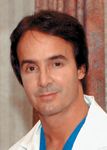- Case-Based Roundtable
- General Dermatology
- Eczema
- Chronic Hand Eczema
- Alopecia
- Aesthetics
- Vitiligo
- COVID-19
- Actinic Keratosis
- Precision Medicine and Biologics
- Rare Disease
- Wound Care
- Rosacea
- Psoriasis
- Psoriatic Arthritis
- Atopic Dermatitis
- Melasma
- NP and PA
- Skin Cancer
- Hidradenitis Suppurativa
- Drug Watch
- Pigmentary Disorders
- Acne
- Pediatric Dermatology
- Practice Management
- Prurigo Nodularis
- Buy-and-Bill
Article
A new look at lipolysis
Author(s):
Boston - Improvements on a non-invasive alternative to liposuction may revolutionize medical procedures in this area, according to a presentation at this year's International Master Course on Aging Skin.

The technique builds on lipolysis, an outpatient procedure that has been available in South America and Europe for about a decade, according to Vincent Giampapa, M.D., clinical professor at the University of Medicine and Dentistry of New Jersey, and a sole practitioner.
"My presentation deals with non-invasive ways of improving body contour without having to do liposuction, period. The technique I'll be describing will replace liposuction for small-volume procedures," Dr. Giampapa says.
The injection causes a lysis of the fat cells, and produces a little swelling and redness for a few days afterward.
But the use of phosphatidylcholine alone had certain drawbacks, Dr. Giampapa says. "Before, with just the injections, there were frequently irregularities, such as divots and waviness, because the injection created a small bolus," he says.
Even with the drawbacks, the older method was still sometimes preferred over liposuction, Dr. Giampapa says. "For treating localized regions, we would sometimes remove 200 to 300 ccs from the abdomen, hips, waist, knees and buttock areas. People tend to get these localized collections and lose their body contours. Frequently, we used to be able to do these procedures under localized anesthesia, but it would require a trip to the hospital, and some significant discomfort for people," Dr. Giampapa says.
The new method presents improvements on both previous techniques. "I've refined the method, whereby the patient immediately goes, following the injections in the office setting, for disbursement treatment, which utilizes ultrasound and endermology," he says. "The ultrasound setting helps disperse the injected solution evenly into the tissues. With the addition of the dispersement technique, the results are much more predictable," Dr. Giampapa says.
The ultrasound technique is similar to the procedure used to treat gallstones and kidney stones, but sound frequencies used are not nearly as powerful, says Dr. Giampapa, who has practiced his refinements in 380 sessions over two years. The endermology component is a deep massage of the skin with a mechanical device. "The ultrasound lasts about five minutes, and the endermology lasts about 10 minutes. The whole treatment, from injection to ultrasound and endermology, takes about 25 minutes," he says.
The refinements to the technique represent cost advantages, as well.
"It costs hundreds, as opposed to thousands, for the treatment. Most doctors already have ultrasounds, and while the endermology device can run $25,000 to $30,000 for the physician, you can use it for other things besides this technique, as well."
However, he doesn't recommend the method under certain circumstances. "This is not a technique for people who are grossly overweight, just as liposuction is often not. ... We encourage everybody who undergoes treatment to drink plenty of fluids," he says.
For more information: See http://www.theyouthfulneck.com/





